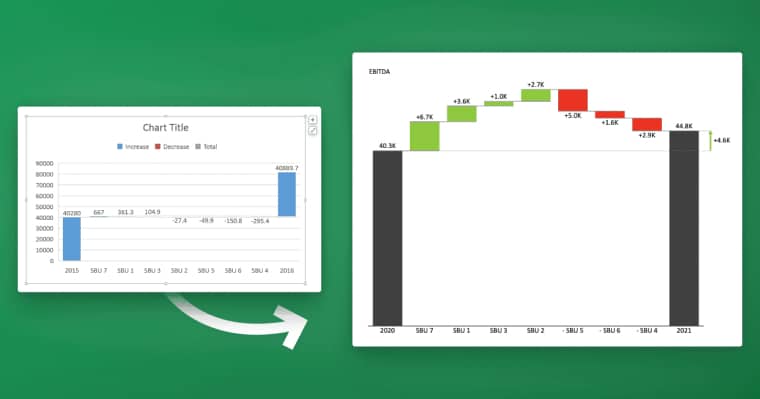Power BI Online is a powerful tool that helps businesses analyze data and gain valuable insights into their operations. Updating data in Power BI Online is crucial to ensure that the analysis is based on accurate, up-to-date information. In this article, we will guide you through the process of updating data in Power BI Online, explaining the different types of data sources, the steps required to import data, and the best practices for maintaining data accuracy.
Table of Contents
Explaining Power BI online and how it works
Power BI Online is a cloud-based business intelligence service provided by Microsoft that allows users to connect and analyze data from different sources. It provides a suite of tools to query, visualize, and share data insights, including interactive reports, dashboards, and data models. Power BI Online is accessible through a web browser, and it’s designed to be user-friendly, making it easy for individuals and teams to use the tool effectively.
One of the key features of Power BI Online is its ability to integrate with other Microsoft products, such as Excel and SharePoint. This allows users to easily import data from these sources and create powerful visualizations and reports. Additionally, Power BI Online offers a wide range of customization options, allowing users to tailor their reports and dashboards to their specific needs.
Another advantage of Power BI Online is its collaboration capabilities. Users can share their reports and dashboards with others, either within their organization or externally, and collaborate in real-time. This makes it easy for teams to work together on data analysis projects and share insights with stakeholders across the organization.
Understanding the different types of data sources in Power BI online
Power BI Online supports various data sources, including Excel files, CSV files, databases, web services, and cloud services such as Microsoft Dynamics 365, Salesforce, and Google Analytics. It’s essential to identify the data source before connecting to it because each source requires a different authentication and authorization method. Some data sources support DirectQuery or Live Connection, while others require data to be imported into Power BI Online.
It’s important to note that some data sources may have limitations on the amount of data that can be imported or queried in Power BI Online. For example, Excel files have a limit of 150,000 rows of data, while some web services may have a limit on the number of API calls that can be made per day. It’s important to consider these limitations when selecting a data source and designing your Power BI reports and dashboards.
Creating a Power BI account and logging in to the dashboard
To use Power BI Online, you must first create an account with Microsoft. You can sign up using your work or school account, or you can create a new Microsoft account. Once you have an account, you can log in to your dashboard and start creating reports and visualizations. Power BI Online provides a home page from which you can access all your reports and dashboards.
Importing data into Power BI online from various sources, including Excel, CSV, and web services
Importing data into Power BI Online is an essential step in updating your data. It involves connecting to your data source and specifying which data to import. Power BI Online provides several methods to import data, including the native data connectors, the Power BI API, or custom connectors. Once you have imported your data, you can create a data model to organize and manipulate your data for analysis.
One of the advantages of importing data into Power BI Online is that it allows you to combine data from multiple sources. For example, you can import data from Excel spreadsheets, CSV files, and web services, and then combine them into a single data model. This can be particularly useful if you need to analyze data from different departments or systems within your organization.
Another benefit of importing data into Power BI Online is that it allows you to automate the data refresh process. Once you have imported your data, you can set up a refresh schedule to ensure that your data is always up-to-date. This can save you time and effort, as you won’t need to manually update your data every time you want to analyze it.
Connecting to a data source using DirectQuery or Live Connection
Connecting to a data source using DirectQuery or Live Connection means that your data remains in its original location, and Power BI Online queries the data source directly whenever a user interacts with the report or dashboard. This method is useful when dealing with large datasets that are continuously updated, such as stock prices or sensor data. With DirectQuery or Live Connection, the dashboard or report always displays the latest data from the source.
However, it is important to note that using DirectQuery or Live Connection can also have some drawbacks. Since the data is queried directly from the source, it can result in slower performance compared to importing the data into Power BI. Additionally, some data sources may not be compatible with DirectQuery or Live Connection, requiring additional configuration or workarounds. It is important to weigh the benefits and drawbacks of each connection method before deciding which one to use for your specific data source and reporting needs.
Updating data in Power BI online by refreshing the dataset on a schedule or manually
The process of updating data in Power BI Online involves refreshing the dataset. You can refresh the data manually or set up a schedule to refresh the data on a regular basis. Scheduled refreshes ensure that your data is always up-to-date and eliminates the need to refresh data manually. Power BI Online supports several data refresh options, including incremental refresh, which only loads new or changed data, and full refresh, which replaces the entire dataset.
Another important aspect of updating data in Power BI Online is the ability to configure data source credentials. This allows you to securely connect to your data sources and ensure that the data is refreshed with the correct credentials. Power BI Online also provides the option to set up alerts for data refresh failures, so you can quickly identify and resolve any issues that may arise.
In addition to refreshing data, Power BI Online also allows you to create and share reports and dashboards with your team or organization. You can customize the visuals and layout of your reports and dashboards to best suit your needs, and share them with others through a variety of methods, including email, embedding, and publishing to the web. With Power BI Online, you can easily collaborate with others and make data-driven decisions together.
Using the ‘Edit Queries’ feature to clean, transform and shape your data before updating it in Power BI online
Power BI Online provides an ‘Edit Queries’ feature that allows you to clean, transform, and shape your data before importing it. This feature is useful for dealing with data quality issues such as missing values, inconsistent formatting, or redundant data. You can use the Power Query Editor to transform your data by adding, removing, or modifying columns, merging or splitting tables, or changing data types.
Setting up alerts to notify you when the data refresh fails or succeeds
Setting up alerts in Power BI Online helps you monitor the status of your data refreshes and notifies you when there are issues. You can set up email notifications or mobile notifications to alert you when your data refreshes fail or succeed. Alerts ensure that you are always informed of the status of your data and can take prompt action in case of data refresh failures.
Troubleshooting common issues that occur when updating data in Power BI online
Updating data in Power BI Online can sometimes encounter issues, such as data source errors, network connectivity issues, or insufficient permissions. Power BI Online provides a robust set of diagnostic tools and logs to help you troubleshoot these issues. You can access the Power BI Online support forum to find solutions to common problems or contact customer support for further assistance.
Best practices for keeping your data up-to-date and accurate in Power BI online
To keep your data up-to-date and accurate in Power BI Online, it’s essential to follow best practices. These include ensuring that your data sources are reliable and trustworthy, validating your data before importing or refreshing, and monitoring the data refresh schedules and alerts. You should also back up your data regularly and ensure that you have a disaster recovery plan in place.
Comparing Power BI Online with other similar business intelligence tools
Power BI Online is just one of the many business intelligence tools available in the market. Other similar tools include Tableau, QlikView, and Looker. Each tool has its unique features and capabilities, and it’s crucial to evaluate each tool’s suitability for your business needs. Some factors to consider when comparing tools include pricing, ease of use, integration with other tools, and data visualization capabilities.
Tips for optimizing your workflow when updating data in Power BI Online
Optimizing your workflow when updating data in Power BI Online is important to ensure that your data analysis is efficient and effective. Some tips for optimizing your workflow include automating data refreshes, organizing your data models, using data gateways, and building calculations using DAX expressions. You should also keep your reports and dashboards simple and focused and avoid using too many visualizations or complex calculations.
Frequently asked questions about updating data in Power BI Online
Q: How often should I refresh my data in Power BI Online?
A: It depends on the frequency of data changes and the business needs. You can set up a schedule to refresh your data, or you can refresh it manually whenever necessary.Q: Can I connect to real-time data sources in Power BI Online?
A: Yes, Power BI Online supports real-time data sources through Azure Stream Analytics.Q: How can I handle data quality issues in Power BI Online?
A: You can use the ‘Edit Queries’ feature to clean, transform, and shape your data before importing it. You can also build data validation checks using DAX expressions.Q: Can I use Power BI Online without an internet connection?
A: No, Power BI Online is a cloud-based service, and it requires an internet connection to access the dashboard and data.Q: How can I share my reports and dashboards with others in Power BI Online?
A: You can share your reports and dashboards with others by publishing to the Power BI service, sharing through OneDrive, or embedding them in a SharePoint site.
In conclusion, updating data in Power BI Online is a critical step to ensure that the analysis is based on accurate, up-to-date information. Power BI Online provides a suite of tools to connect, analyze, and visualize data from various sources, making it easy for individuals and teams to gain insights into their businesses. By following best practices and optimizing your workflow, you can make the most of Power BI Online’s capabilities and get the most out of your data analysis efforts.














